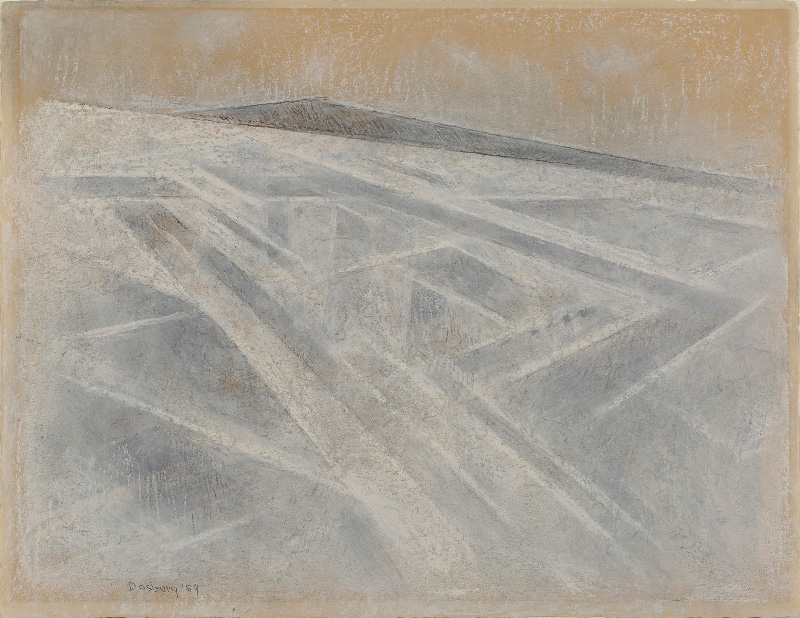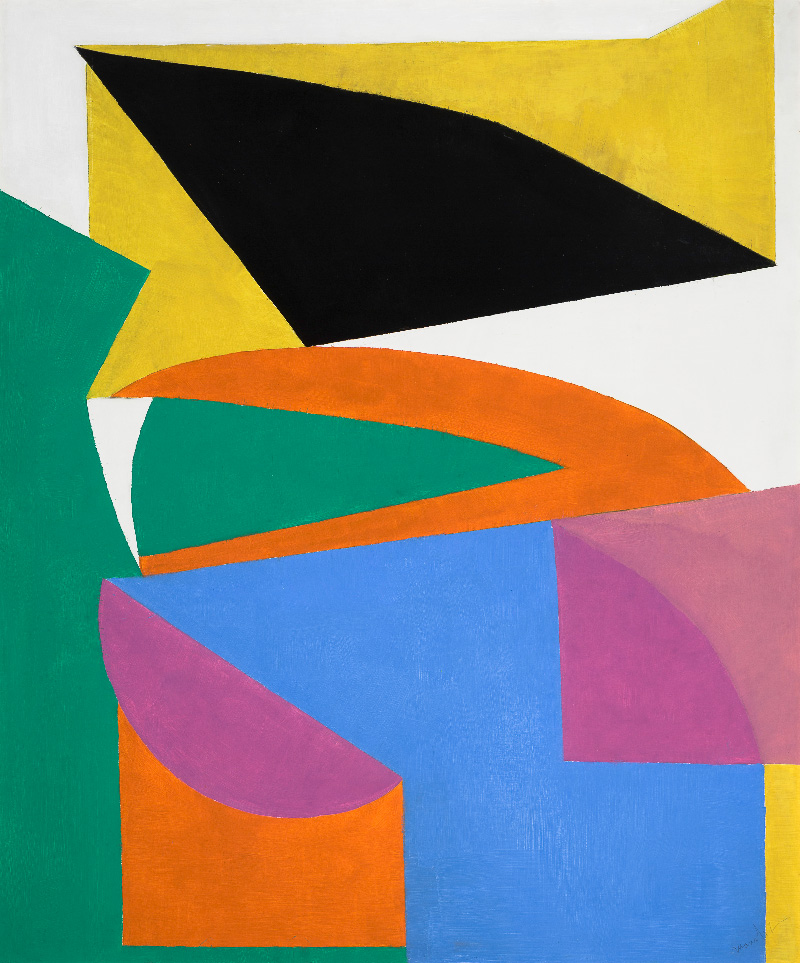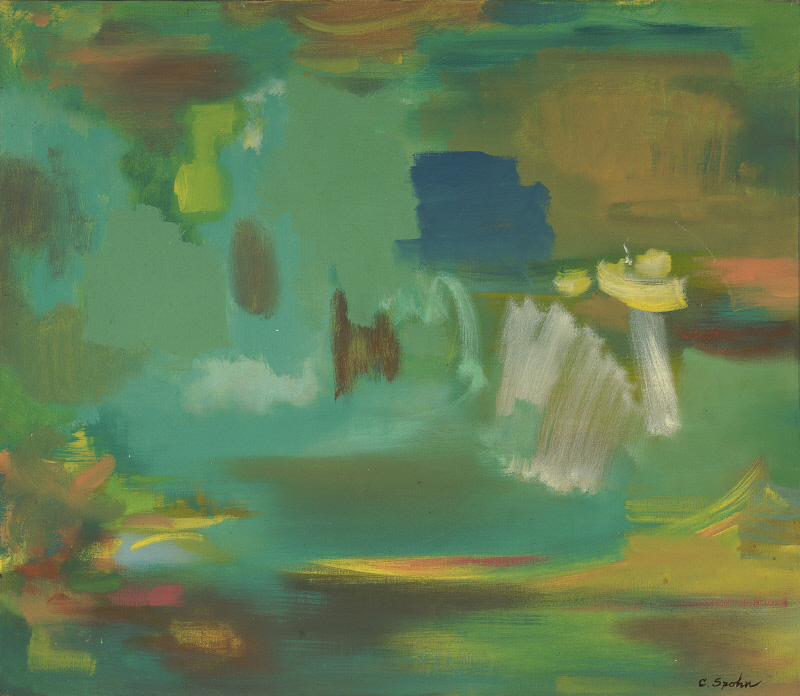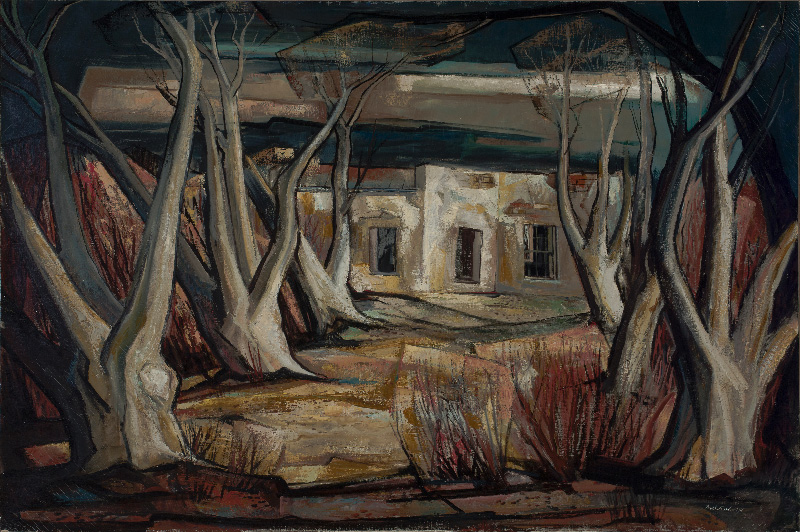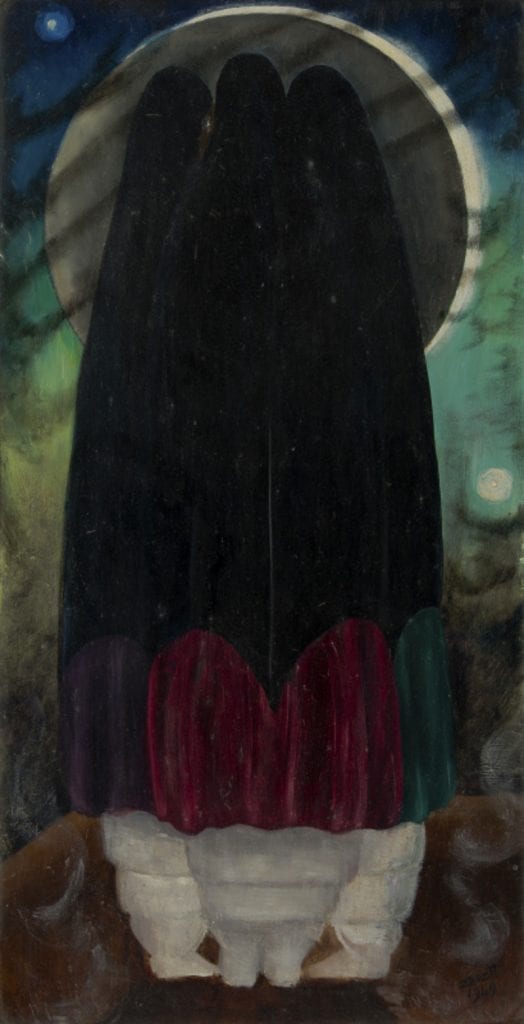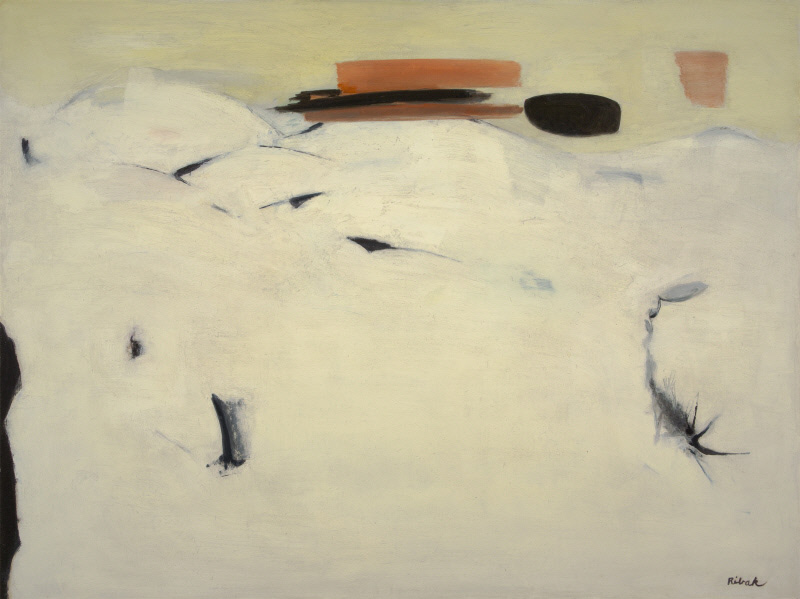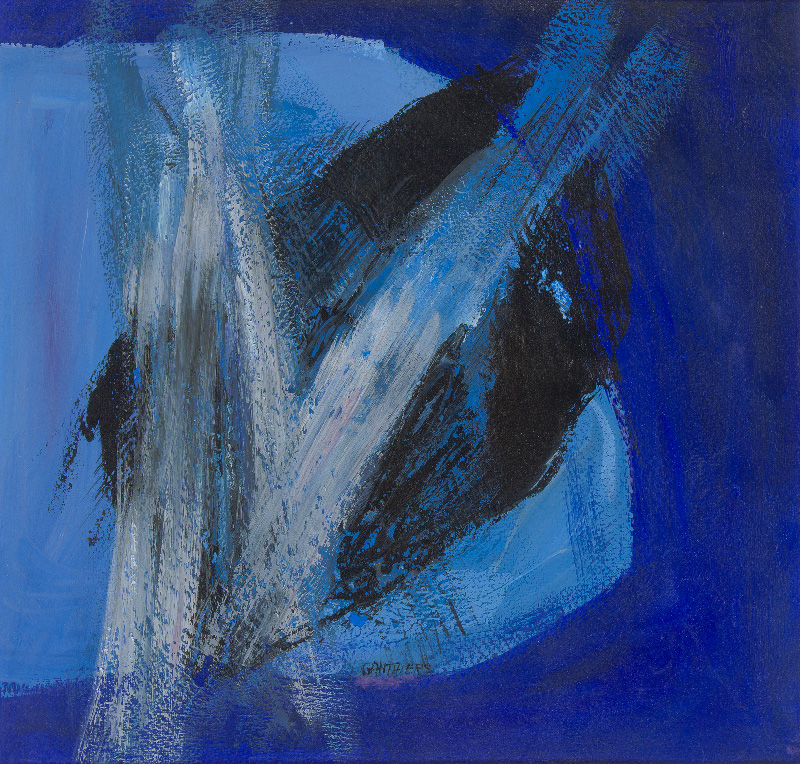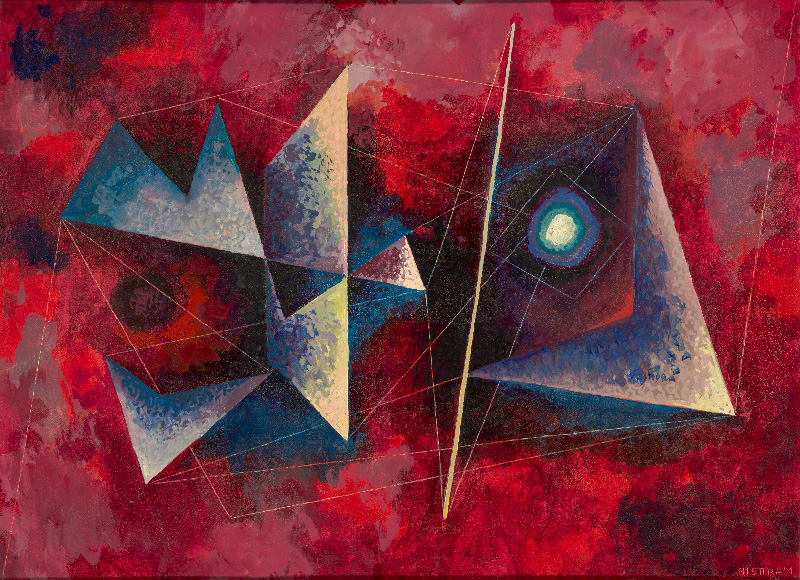Taos Moderns
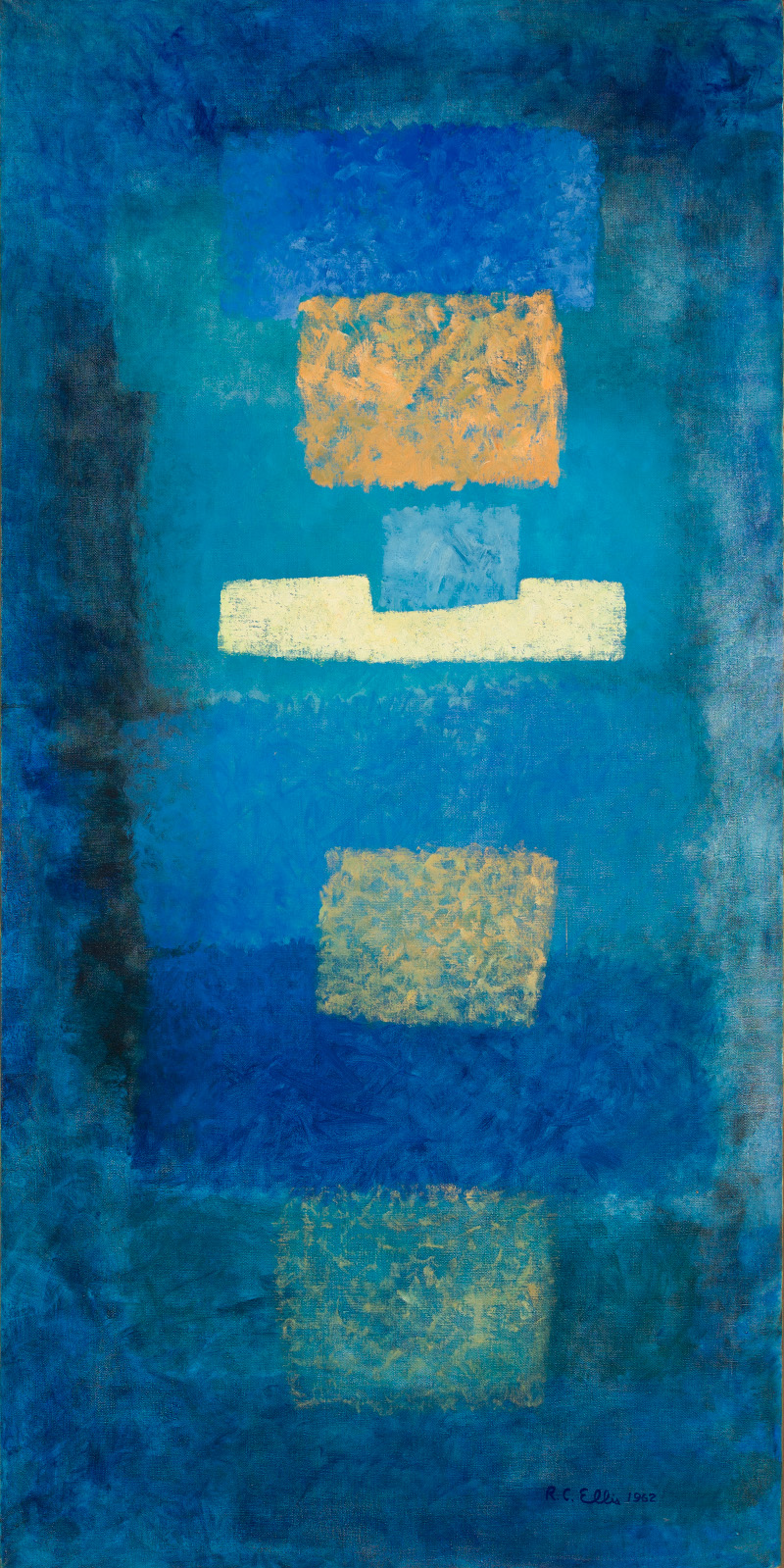
Robert C. Ellis, Composition #3, 1962, Oil on canvas, Overall: 60 x 30 in. (152.4 x 76.2 cm), Gift of Rosa Ellis Clark
Taos Moderns and Mid-Century Moderns
The influx of dozens of artists by the 1940s had established Taos as one of the centers of modernist artistic activity in the United States. In the middle part of the decade, several artists began showing together in art galleries and museums and were collectively known as the Taos Moderns. Although they never created a formal group such as the Taos Society of Artists, they changed the community’s artistic direction.
The Taos Moderns paintings were either abstract, using subject matter, or non-objective compositions of pure form. The stark New Mexico landscape brightened their palettes just as it had that of earlier artists. Cultural influences continued to be important as well. The timelessness they perceived in Taos Pueblo’s culture and the deep connection to the land they noted in the lives of both Native Americans and Hispanics influence experimentation and innovation in their art.
If there was any one guiding philosophy during this period, it was a commitment by artists to seek ‘the new’ in their visual imagery. Many of them were not content with depicting the landscape’s surface beauty or the figurative portraits done by earlier artists. Instead, they wanted to capture the underlying structure of a subject to reveal its true meaning.
A Confluence of European and American Modernism
Taos became a magnet for modernist aesthetic early in the 20th Century with the influence of Mabel Dodge Luhan. Mabel was a key organizer of the pivotal 1913 Armory Show in New York, which introduced the public to avant-garde European artists. Mabel invited Andrew Dasburg, Marsden Hartley, John Marin, Agnes Pelton, Georgia O’Keeffe and numerous other artists and creatives to Taos beginning in 1917, many of whom made Taos their home, anchoring pre-war American Modernists to the region.
The 1940s was a significant transition period for the Taos art community. A group of modernist artists arrived who would set a new artistic course for a generation. Following World War II, Taos became an important crossroads in contemporary American art, a place where European and American modernism’s influences came together. Artists from New York and San Francisco, the cradles of post-war abstract painting, found in Taos a conducive place to work devoid of the big cities’ distractions. Many modernist artists arrived in Taos with little if any knowledge of the earlier artists, as if inexplicably drawn to the Town’s inherently creative atmosphere. Many came to study under the G.I. bill.
Learn More
Andrew Dasburg arrived in Taos in 1918 at the behest of Mabel Dodge Luhan, and as a teacher at the UNM Art Field School at the Harwood, he encouraged many artists to explore abstraction including Ward Lockwood, R.C. Ellis and Agnes Martin. Emil Bisttram began working in cubist and futurist styles after arriving in Taos in 1931, establishing an art school and co-founding the Transcendental Painters Group with Raymond Johnson. New York artist Louis Ribak arrived in Taos in 1944 with his wife, painter Beatrice Mandelman, emerging as a younger generation leader through the Taos Valley Art School. In the early 1950s, Clay Spohn, an abstract expressionist, and Edward Corbett, an artist with a growing reputation as a modernist, arrived from San Francisco. These artists as well as Robert Ray, Cliff Harmon and Earl Stroh became known as the “Taos Moderns”.
In the same way that the Taos Art Colony in earlier decades attracted other artists to the area, these new artists were visited by their friends and associates, including such prominent figures as Mark Rothko, Ad Reinhardt, Clyfford Still, and Morris Graves.
Modernists at the Harwood Museum
Art from our collection of Mid-Century and Taos Moderns can always be viewed at the Harwood Museum. Works on permanent display include the Agnes Martin gallery. Our permanent art collection also includes art by these notable Modernists:
- Patrociño Barela
- Thomas Benrimo
- Dorothy Eugenie Brett
- Edward Corbett
- Andrew Dasburg
- Marsden Hartley
- Agnes Martin
- Louis Ribak
- Clay Spohn
See Our Mid-Century Moderns Collection
Explore our permanent art collection and archives of the Taos Moderns with images and a searchable database online.

